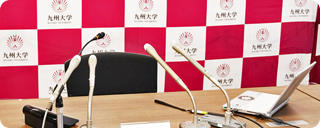研究成果 Research Results
- TOP
- News
- Research Results
- Life’s building blocks in Bennu samples
Life’s building blocks in Bennu samples
Japanese collaborators detected all five nucleobases — building blocks of DNA and RNA — in samples returned from asteroid Bennu by NASA’s OSIRIS-REx mission.Professor Hiroshi Naraoka
Faculty of Science
2025.02.07Research ResultsPhysics & Chemistry
Joint Press Release by Hokkaido University, Japan Agency for Marine-Earth Science and Technology (JAMSTEC), Kyushu University, Tohoku University, and Keio University.
A mosaic image of asteroid Bennu is composed of 12 PolyCam images collected by the OSIRIS-REx spacecraft from a range of 24 kilometers. (NASA/Goddard/University of Arizona)
Asteroids, small airless bodies within the inner Solar System, are theorized to have contributed water and chemical building blocks of life to Earth billions of years ago. Although meteorites on Earth come from asteroids, the combination of exposure to moisture in the atmosphere and to an uncontrolled biosphere means that interpreting the data from them is challenging. Pristine samples collected from asteroids in space would be the ideal candidates, and successful sample collection missions have only been achieved by two countries: Japan (Hayabusa and Hayabusa2) and the United States (OSIRIS-REx).
NASA’s OSIRIS-REx mission returned 121.6 grams of sample from asteroid (101955) Bennu in September 2023—the largest sample ever returned to Earth. Now, an international team of OSIRIS-REx sample analysis team scientists, led by Dr. Daniel Glavin and Dr. Jason Dworkin at the NASA Goddard Space Flight Center, has reported the discovery of ammonia and nitrogen-rich soluble organic matter in these samples. The findings were published in the journal Nature Astronomy. Among the findings, the Japanese contributors detected all five nitrogenous bases, molecules required for building DNA and RNA, supporting the theory that asteroids could have brought the building blocks of life to Earth.
The analysis was carried out by a research team, whose members are part of the OSIRIS-REx sample analysis team, consisting of Associate Professor Yasuhiro Oba of Hokkaido University, Principal Researcher Yoshinori Takano of JAMSTEC and Keio University, Dr. Toshiki Koga of JAMSTEC, Professor Hiroshi Naraoka of Kyushu University, and Associate Professor Yoshihiro Furukawa of Tohoku University.
OREX-800044-101, the sample that was analysed by the Japanese members of the OSIRIS-REx sample analysis team. (Photo provided by Yasuhiro Oba)
A poster depicting all the compounds discovered in the OSIRIS-REx sample. ©NASA
###
For more information about this research, see “Abundant ammonia and nitrogen-rich soluble organic matter in samples from asteroid (101955) Bennu.” Daniel P. Glavin, Jason P. Dworkin, et al. Nature Astronomy https://doi.org/10.1038/s41550-024-02472-9
Research-related inquiries
Hiroshi Naraoka, Professor
Faculty of Science
Contact information can also be found in the full release.
- TOP
- News
- Research Results
- Life’s building blocks in Bennu samples































